Visit Rome in 2 days
17 must-see POIs, optimized routes and anecdotes.
Loading map...
You will visit the most beautiful points of interest in Rome
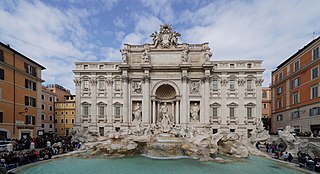

.jpg/320px-Egyptian_Obelisk_Solare,_Psammeticus_II,_Heliopolis,_Taken_by_Augustus_in_10_BC_(48424248527).jpg)
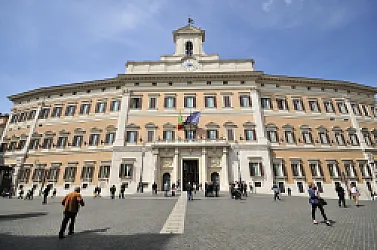
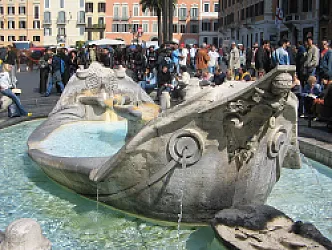
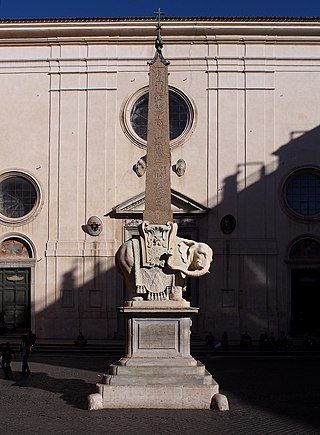
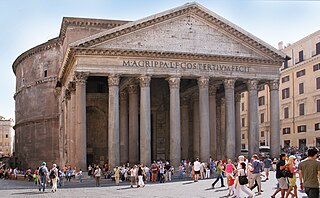






.JPG/320px-0_Cordonata_-_Dioscuri_-_Palazzo_Senatorio_(1).JPG)
_-_2021-08-30_-_2.jpg/320px-Église_Gesù_-_Rome_(IT62)_-_2021-08-30_-_2.jpg)
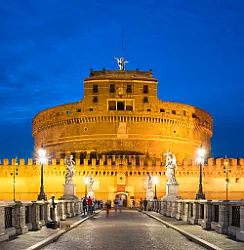

2 Days in Rome — A whirlwind of marble, espresso, and soul
Rome stole my heart the moment I stepped onto those warm cobbles. The Eternal City feels alive in every alley. "Rome wasn't built in a day," they say, and that truth is delicious. Some call it overrated, but for me that simply means you must go and judge for yourself. I still remember my first cappuccino beside a centuries-old fountain.
Why visit? Because Rome is more than a pile of ruins. It breathes history and everyday life at once. You will hear church bells, smell fresh bread, and see sunlight melt on travertine. Wander under the dome of the Pantheon, trace the river toward Castel Sant'Angelo, and stand in awe at the sweeping steps of Altare della Patria. This 2 days in Rome plan focuses on the city's pulse: sacred spaces, bold monuments, intimate squares, and unexpected sculptures. Expect emotional moments, tiny culinary joys, and a constant ache to linger longer.
Planning can feel overwhelming. There is simply so much to see that you could spend weeks exploring. I get it — limited time, long queues, and a fear of missing the "must-sees." If you're coming for the first time in Rome, you want a smart, soulful route that still breathes. That’s why I created this Rome itinerary. Below, I'll show you exactly how to spend two days and maximize your time while savoring the city’s magic. It covers nine memorable spots, from Elephant and Obelisk to San Salvatore in Lauro, and the iconic monuments you can’t miss.
Key tip: Start early and move slowly in the afternoons. Beat the crowds at popular sites by arriving near opening. Then, recover with long lunches and lazy piazza people-watching during peak hours. This balance keeps the days full without burning you out. It also lets you enjoy the city's quieter, golden-hour moments. Now let's dive into the itinerary!

Quick Mini Guide to Rome
Where to stay:
- Centro Storico (near Pantheon) — walkable to Elephant & Obelisk and many churches; perfect for dawn visits.
- Prati — calm, smart cafés and a short walk to Castel Sant'Angelo and the Vatican; better for evenings.
- Trastevere — lively at night; good base if you want authentic trattorie after a day of sightseeing.
When to visit:
- Shoulder seasons (Apr–May, Sep–Oct) for mild light and open sites; avoid August closures and heat.
- Start mornings at monuments (Pantheon, Altare della Patria rooftop) to beat crowds and catch golden light.
Things to do:
- Pantheon & Elephant and Obelisk (Piazza della Minerva): combine early — Bernini’s elephant then the Pantheon’s interior tombs.
- Castel Sant'Angelo: walk the Tiber riverside; climb for sunset views and learn the Passetto escape route.
- San Salvatore in Lauro: seek this quieter Renaissance church in the historic fabric for a local respite.
- Altare della Patria (Vittoriano): rooftop panorama — book timed entry or go at dusk for city lights.
- Interactive tours — try "Secrets of Rome" for hidden stories, "Mates" for social local walks, or "Mess and Madness ROME" for offbeat history.
Don't forget:
- Comfortable shoes for cobbles, a refillable bottle (nasoni fountains), and small cash for churches.
- Modest dress for churches, validate transport tickets, and watch for pickpockets near major sights.
Day 1 - Rome
10 POIs to discoverDay 1 - Morning à Rome
5 Points of interest - Duration : 2h15 - Distance : 1.7 km - Walking : 0h22
Trevi Fountain
- The construction of the fountain took place between 1732 and 1762, being designed by architect Nicola Salvi, although, more artists such as Pietro Bracci, Filippo della Valle and Giovanni Pannini contributed to its creation.
- The fountain is made of travertine and marble, with a width of 49.15 meters and a height of 26.30 meters.
- The Trevi Fountain is known for its impressive array of sculptures and its triumphal arch.
- There is a tradition of throwing coins into the fountain, which is believed to ensure a return to Rome and, depending on the number of coins thrown, may bring romance or marriage.
- The collection of coins thrown into the fountain is used for charitable purposes and for the maintenance of cultural heritage.
Temple of Hadrian
- Built in 145, the temple was erected in honor of Emperor Hadrian by his successor Antoninus Pius.
- Today, only eleven 15-meter-high Corinthian columns and some remains of the temple remain, which are incorporated into a 17th-century building designed by Carlo Fontana.
- The temple was decorated with reliefs representing the various provinces of the Roman Empire, which are now housed in the Capitoline Museums.
- Today, the building houses a museum dedicated to Hadrian and an art gallery.
.jpg)
Obelisk of Montecitorio
- The Montecitorio obelisk is one of the thirteen ancient obelisks of Rome, 30 meters high, brought by Augustus in 10 BC.
- During Roman times, the obelisk was used as a nomon for a sundial by Augustus.
- An inscription on the obelisk mentions that Augustus gave it as a gift to the sun.
- During the medieval and modern period, the obelisk collapsed and was later restored by popes such as Sixtus V and Pius VI.
- Its nomonic function was restored, but was later lost.
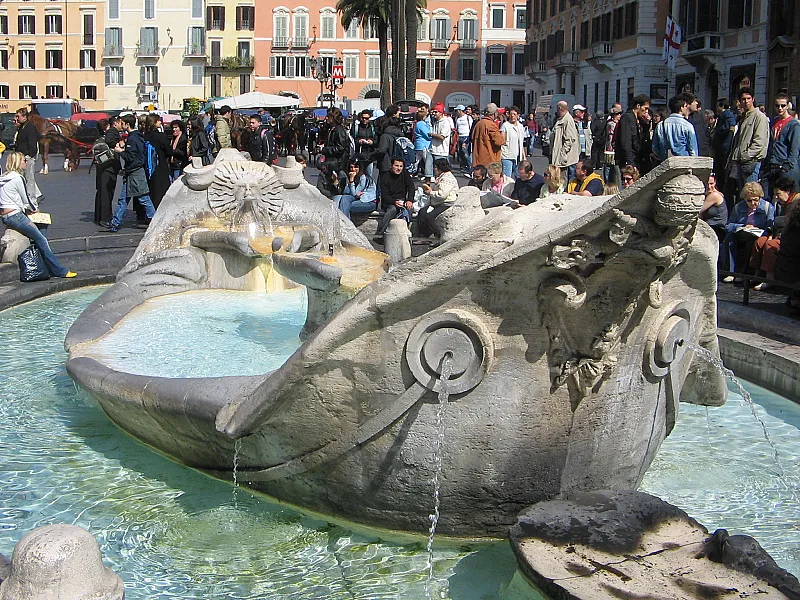
Fontana della Barcaccia
- La Fontana della Barcaccia is a fountain in Rome designed in the shape of a boat.
- The fountain was created by Pietro Bernini, assisted by his son, Gian Lorenzo in 1629.
- Its unique design was a solution to overcoming water pressure issues from the Vergine aqueduct at that location, creating a spectacle where water flows over the sides of the boat into the surrounding basin.
- The design was potentially inspired by the sight of a dry-docked boat left by the flooding of the Tiber River in 1598.
- It could also refer to a type of transport boat used in ancient Rome.
- The fountain has suffered two acts of vandalism, one in 2007 and another in 2015, which have significantly damaged the monument.
- Several restoration efforts have been attempted over the years, to preserve and restore the fountain's integrity.
- The most recent restoration was in 2013-2014, which was funded by a private donation of 209,960 euros.
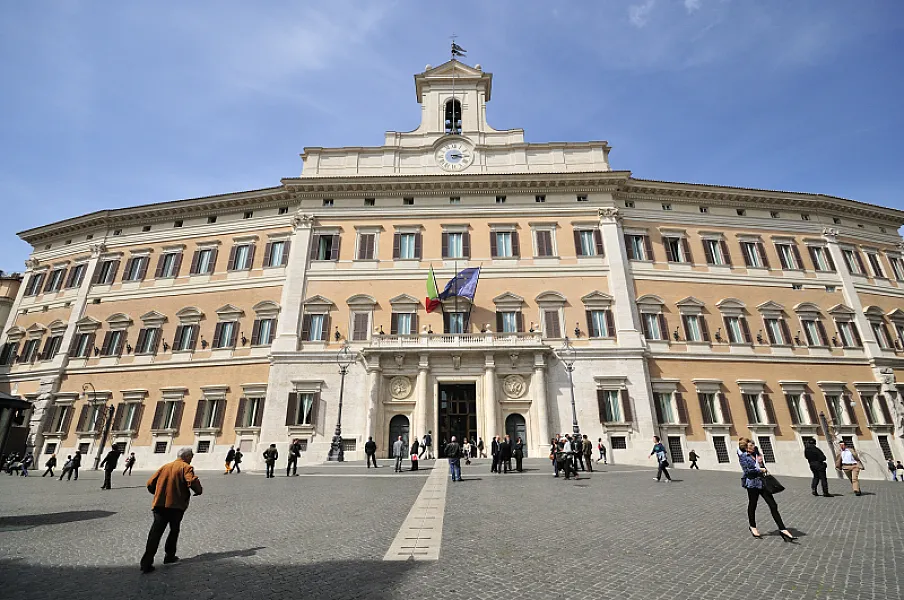
Palazzo Montecitorio
- The Montecitorio Palace is currently the seat of the Italian Chamber of Deputies.
- The original building was designed by Gian Lorenzo Bernini for Cardinal Ludovico Ludovisi and then modified by Carlo Fontana.
- In 1696, the Apostolic Curia was installed there, making the palace the center of the judicial and administrative life of the papal government.
- The building was rebuilt in the early 20th century by the architect Ernesto Basile, a representative of Italian Art Nouveau.
- The debating chamber contains many Art Nouveau-style decorations, including a large bronze panel representing "The glorification of the dynasty of the House of Savoy".
- The Obelisk of the Horologium of Augustus, known as the Obelisk of Montecitorio, was installed in front of the palace by Pope Pius VI in 1789.
Day 1 - Afternoon à Rome
5 Points of interest - Duration : 3h30 - Distance : 1.1 km - Walking : 0h14
Galleria Sciarra
- Originally, the area housed the Porticus Vipsania, built by Vipsania Polla.
- The current building is an external courtyard of Palazzo Sciarra Colonna di Carbognano, built between 1885 and 1888.
- Designed by architect Giulio De Angelis, it has a vaulted structure of iron and glass.
- The decorations show the theme of the "Glorification of Woman" and scenes of the bourgeois life of the time.
- In the restoration of the 1970s, the building was rebuilt in reinforced concrete, but the decorations and iron structures were saved.
Santi Apostoli
- Founded in the 6th century during the Byzantine era by Pope Pelagius Ir.
- It was destroyed by an earthquake in 1348 and restored in the 15th century under Pope Martin V, with a portico on the front facade and a fresco of The Ascension by Melozzo da Forlì.
- In 1702, Pope Clement XI commissioned its complete restoration, and the church was consecrated in 1724.
- Highlights include the fresco of the Triumph of the Franciscan order of Baciccio and the tomb of Pope Clement XIV by Antonio Canova.
- The crypt under the main altar houses the remains of the apostles Philip and James, as well as other relics and tombs of the Riario family.

Altare della Patria
- Built with white Botticino marble, the monument is notable for its majestic staircases, Corinthian columns and statues of Victory with quadrigas.
- The structure is 35 meters wide and 40 meters high, reaching 61 meters including the quadriga and the wings of the goddesses.
- At the base of the monument is the Museum of the Unification of Italy.
- On the monument is a tomb to the unknown soldier with an "eternal flame", honoring a young deserter from the Austro-Hungarian army who joined the Italian army and went missing in action during World War I.
- The monument has been the subject of controversy due to the destruction of a part of the historic Capitoline Hill during its construction and its imposing size.
Piazza del Campidoglio
- Initially, the area was abandoned in the Middle Ages and was known as "monte Caprino." In the 12th century, it became the seat of the Town Hall, and in the 16th century, Pope Paul III commissioned Michelangelo to renovate the square.
- The statue classical Mark Aurelius' bowman adorns the square.
- Giacomo Della Porta continued the work following Michelangelo's original plan, and statues and fountains were added.
- The Palazzo Senatorio now houses Rome's City Hall, and the Capitoline Museums are located in the other two palaces in the square.
_-_2021-08-30_-_2.jpg)
Church of the Gesù
- The Church of the Gesù was built in 1568 for the Society of Jesus and is considered the mother church of this order.
- The building is emblematic of Jesuit art and is one of the most remarkable architectural manifestations of the Counter-Reformation movement.
- The Society of Jesus, founded in 1540 by Pope Paul III, aimed to fight against the Protestant Reformation. The beginning of construction only started in 1568 and was financed by Cardinal Alessandro Farnese.
- The central fresco of the vault, painted by Giovanni Battista Gaulli between 1672 and 1683, represents the Triumph of the Name of Jesus, remaining a flagship example of baroque trompe-l'oeil painting.
- The architecture of this church has been replicated many times, and is sometimes considered the prototype of a new style: the Jesuit style.
Day 2 - Rome
7 POIs to discoverDay 2 - Morning à Rome
5 Points of interest - Duration : 3h00 - Distance : 1.3 km - Walking : 0h17
Elephant and Obelisk
- The obelisk is one of Rome's thirteen obelisks, brought from Heliopolis in the time of Domitian.
- Gian Lorenzo Bernini was the architect behind its design, choosing an elephant as the figure to symbolize divine wisdom.
- At the base of the monument, there is an inscription in Latin highlighting the need for a strong mind to sustain sound wisdom.
- Bernini's design of the obelisk on an elephant was replicated in the 18th century by Giovanni Battista Vaccarini in the Piazza del Duomo in Catania.
- In 2016, there was an act of vandalism in which the elephant's left tusk was broken off, generating concern in Rome.

Pasquino
- The statue is a fragment of a Hellenistic work, possibly representing a Greek warrior.
- The origin of the name "Pasquino" is uncertain, with several theories, such as a grammar teacher or a gladiator.
- In the imperial era, satirical writings were placed on its pedestal, popularizing the term "pasquino." In the contemporary press, "pasquin" refers to sensationalist and slanderous newspapers.

Pantheon
- The original Pantheon, attributed to Marcus Vipsanius Agrippa, was destroyed, and the present one was built in Hadrian's time.
- Dedicated to the Virgin Mary, the name comes from the Greek "Πάνθειον", meaning "temple of all the gods".
- The building is circular, with a large portico of Corinthian columns and an unreinforced concrete dome, the largest in the world at the time.
- It has been in continuous use as a church since the 7th century and is currently called the "Basilica of St.
- Mary and the Martyrs." State property managed by the Ministry of Cultural Assets and Activities, visited by six million people in 2013.

Four Rivers Fountain
- The fountain features an Egyptian obelisk topped by four colossal figures personifying the rivers Nile, Rio de la Plata, Danube and Ganges.
- It was commissioned by Pope Innocent X and is interpreted as a symbol of the triumph of the Church on the four continents.
- Bernini initially imagined the fountain differently, but eventually opted for marble and modified the dimensions to support the obelisk.
- The costs of the fountain were so high that the pope levied a tax on bread to finance it, which generated discontent in Rome.
- A miniature replica of the fountain is located in the Royal Palace in Madrid.
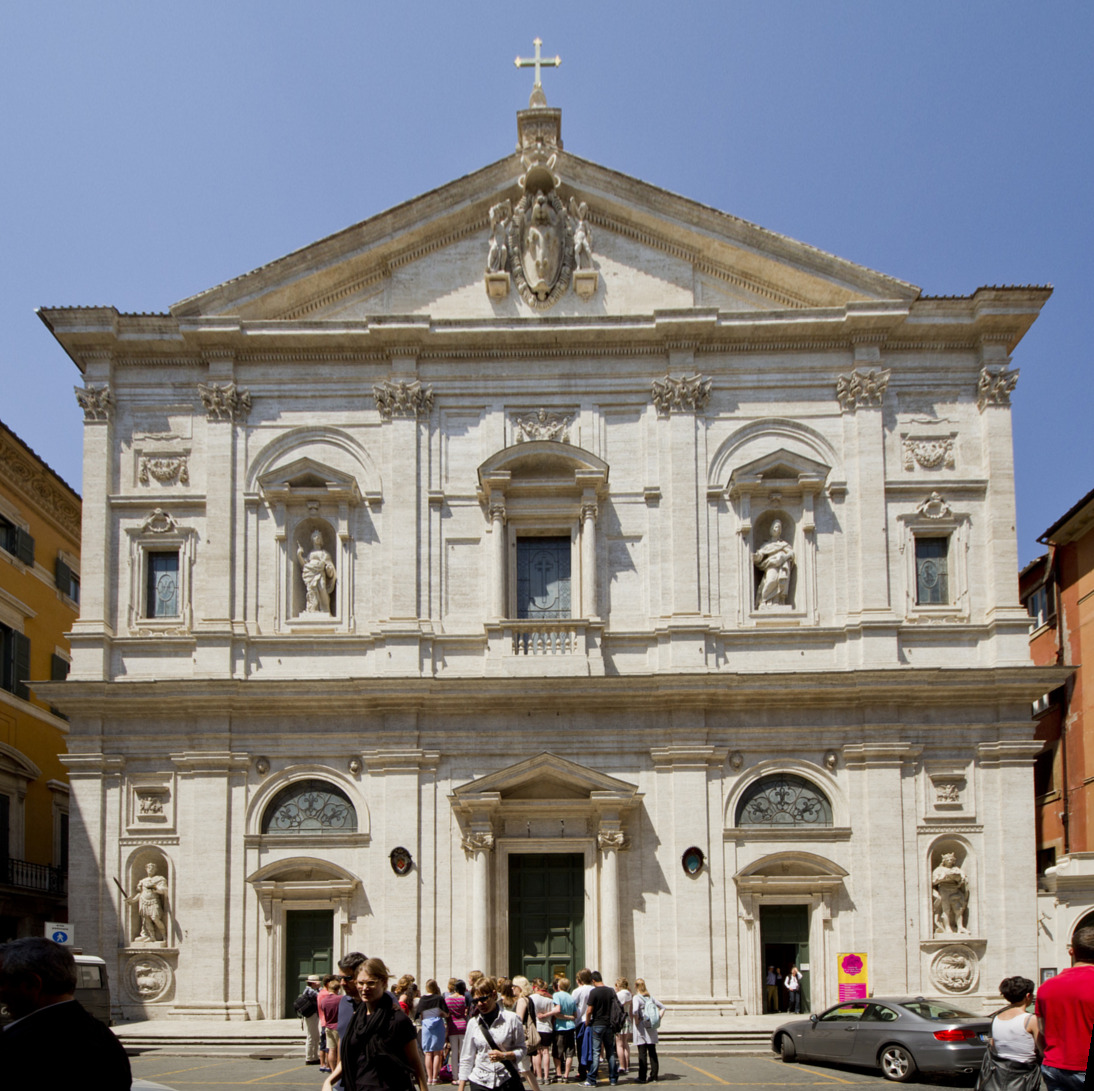
San Luigi dei Francesi Church
- Built between 1518 and 1589, the church is an example of Renaissance architecture.
- Its facade and interior are infused with French elements, including commemorative statues and frescoes.
- The church is dedicated to the Virgin Mary, Saint Dionysius Areopagite and Saint Louis, King of France.
- Several prelates and members of the French community in Rome are buried in this church.
- In one of its chapels, the Contarelli Chapel, there are famous canvases by Caravaggio depicting St.
Day 2 - Afternoon à Rome
2 Points of interest - Duration : 1h15 - Distance : 0.4 km - Walking : 0h04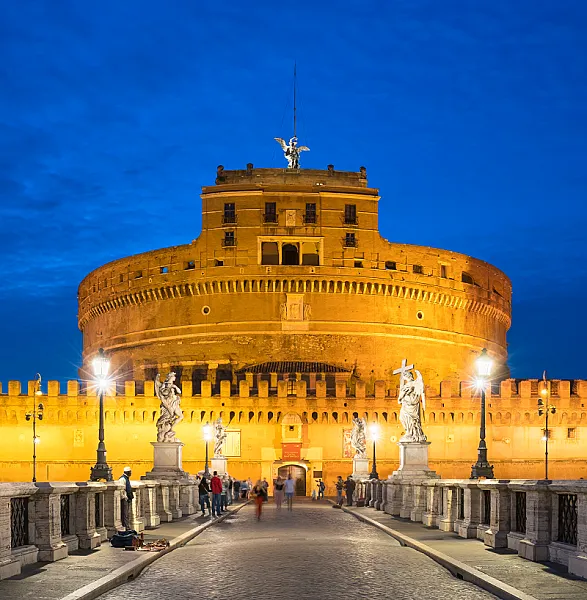
Castel Sant'Angelo
- It is located near the Vatican and is connected to the Vatican City through the fortified passageway called Passetto.
- It is currently a museum and property of the Italian State, managed by the Ministry for Cultural Assets and Activities.
- The castle was built by Emperor Hadrian in 139 AD.C. as a mausoleum for him and his family.
- Throughout history, the castle was used as a fortress, prison and papal refuge.
- It has undergone several modifications and restorations over the centuries, which has made it a fascinating historical monument.

San Salvatore in Lauro
- The church is the seat of the diaconia of the Marches living in Rome.
- It began its construction in the 16th century and was completed in the 19th century.
- The church is of Roman rite and is dedicated to Jesus the Savior.
- The baroque and neoclassical architecture features a façade with a procer and a sculpture depicting the Holy House of Nazareth.
- The church houses two pipe organs, one built by Girolamo Priori and the other by Filippo Tronci.
Where to Stay in Rome
Location matters in Rome because the city you’ll explore in two days is compact but layered: narrow alleys, piazzas and monuments sit cheek-by-jowl, and choosing the right base turns rushed sightseeing into relaxed wandering. Aim to be within easy reach of the Pantheon and the little Bernini elephant and obelisk at Piazza della Minerva so you can drop into those treasures early or late, before the crowds. A well-placed room lets you enjoy the atmosphere at dawn and return for a siesta without losing time on transit.
Rome is organized around the ancient core and the Tiber. The most useful concept is the historic center — the area between the river and the main monuments — where walking often beats the bus for speed and charm. Streets are cobbled and direct routes can be deceptive, so expect pleasant detours through piazzas. Public transport (metro lines, buses and trams) radiates outward: Line A serves the Vatican/Prati side and the Spanish Steps area, while Line B and surface routes connect the Colosseum/Altare della Patria corridor. Remember many tiny streets have limited vehicle access, so plan walking time.
For two days, target neighborhoods that keep Castel Sant'Angelo, the Pantheon and the area around the Altare della Patria within comfortable reach. The Centro Storico around the Pantheon and Piazza Navona offers immediate access to the Elephant and Obelisk and an evening buzz. Prati, just across the river from Castel Sant'Angelo and the Vatican, is calmer and very convenient for museums and transport. If you want to be a little closer to the Altare della Patria and major bus routes, the areas toward Monti or near Piazza Venezia put you a short walk from those monuments without losing character.
Transport tips: plan to walk as your first mode, use buses or Line A for longer hops, and grab a taxi for late arrivals or heavy luggage. Beware of the ZTL (limited-traffic zones) when driving into the center. Many central streets are pedestrianized at certain hours; if you’ll be picked up by car, arrange a nearby meeting point to avoid fines.
When choosing a place, prioritize walking distance, a quiet street, and practical details like an elevator or air conditioning. Look for flexible cancellation and clear directions about stairs and ZTL access. With a central, well-located base you’ll trade frantic transfers for leisurely espresso stops between the Elephant and Obelisk, Castel Sant'Angelo and the grand silhouette of the Altare della Patria—exactly the relaxed two-day Rome you want.
Getting Around Rome
Rome’s public transport feels complicated until you try it — then it’s delightfully straightforward. The city is served by ATAC, an integrated network of Metro lines, bus routes and tram lines that link the big sights with the neighborhoods you want to explore. Many of the places tourists visit — from the Bernini Elephant and Obelisk at Piazza della Minerva to the atmospheric lanes around the Pantheon and the riverside walk by Castel Sant'Angelo — are an easy hop by bus or, better yet, a lovely walk, so the system really complements how you’ll want to move around. 🚇
Practical tip: buy a ticket before boarding at a newsstand, Tabacchi, or the ticket machines, or use apps like MyCicero or the ATAC app. The common single integrated ticket (known locally as a BIT ticket) lets you change within roughly 100 minutes and costs around €1.50; day and multi‑day passes (Roma 24/48/72) are available and cost roughly €7/€12.50/€18 respectively, with a weekly option if you’re staying longer. Always validate on the bus’s yellow machine or at the metro turnstiles — inspectors do check and fines are real 🎫.
When planning a route, don’t underestimate Google Maps — its transit directions in Rome are surprisingly reliable and show whether a metro or bus is faster. I also keep MyCicero on my phone for buying and storing tickets, and I glance at live updates for strikes or delays. If you’re unsure, ask at a newsstand or a station ticket window; Romans are used to helping lost tourists and a friendly “Scusi, come arrivo a…?” will usually get you clear directions. 🗺️
To save money, walk the historic center whenever possible — the distance between the Pantheon, the piazzas and the small churches is often shorter on foot than by public transport. Buy a 24‑ or 48‑hour pass if you plan several metro/bus rides in a day; otherwise the single BIT ticket is perfect. Avoid late-night taxis from major sights if you can; public transport or a pre-booked transfer tends to be cheaper and less stressful.
I remember one sunny afternoon when we wanted to go from Castel Sant'Angelo to the Pantheon: instead of waiting for a bus we walked across Ponte Sant'Angelo, cut through the tiny lanes, and emerged at Piazza della Rotonda in under 20 minutes — more scenic and cheaper than any ride. On a rainier day we hopped the bus 64 toward the area, tapped our validated ticket, and still arrived feeling like locals who know how to string a few short rides and pleasant walks together. Once you try that mix, you’ll find Rome’s public transport feels like a friendly guide rather than an obstacle.
What to Pack for Rome
Two days in Rome is a delicious sprint: churches, piazzas, sculptures and memorials back-to-back. Expect long days on cobblestones, crowds around landmarks and a few dress-code moments at churches. I’ve done days where I was out for 10+ hours and once walked nearly 15 miles in one long loop from Trastevere to the Colosseum — so I pack for comfort, security and quick charging.
1. Comfortable walking shoes (required): Bring a well-broken-in pair — think New Balance 574 or Ecco Soft 7-style leather sneakers. I learned the hard way: new shoes + cobblestones = blisters after 7 miles. Good soles and arch support kept me exploring all day; you’ll thank yourself after 10+ hours of standing in front of basilicas and monuments.
2. Cross-body bag: Pickpockets are a reality near Termini and big sights, so use a secure cross-body with zip closures (worn in front). Once in Piazza Navona a hand brushed my backpack; because my phone was zipped in front, nothing happened. Keeps passport, cards and camera handy and safer than a loose backpack.
3. Weather-appropriate clothing for Rome: Layers and a light scarf are gold. In summer I wore breathable linen and a thin scarf to cover shoulders at St. Peter’s; in spring/fall a light waterproof jacket saved me from chill and a drizzle. Churches often require covered shoulders/knees, so pack at least one long skirt or lightweight wrap.
4. Power adapter (Italy Type C/L, 230V): Hotels often have odd plug layouts and limited sockets. I once had my camera and phone both needing juice and only one outlet — a small universal adapter with dual plugs fixes that. Why: you’ll be using maps, tickets and taking photos all day.
5. Power bank: A 10,000–20,000 mAh power bank is a must when you’re out for 10+ hours. My phone died mid-Colosseum visit once; I missed tickets and had to queue again. Carry one that can recharge a phone twice so you can keep maps, photos and contact apps alive.
6. Optional — Refillable water bottle & compact umbrella: Rome’s nasoni (drinking fountains) are everywhere, so a small refillable bottle saves money and keeps you hydrated on long walking days. Also tuck a compact umbrella for sudden showers in shoulder seasons — I’ve been grateful for both during an unexpected spring downpour near the Pantheon.
Enjoy Your Trip to Rome!
Packed with history and lively streets, this 2-day plan takes you through nine carefully chosen spots across Rome. From the quirky Elephant and Obelisk to the riverside grandeur of Castel Sant'Angelo and the timeless Pantheon, you’ll have everything you need to soak up monuments, churches, sculptures and the city's vibrant urban culture. It's compact, exciting, and ready to explore.
Remember, this is a guide, not a strict timetable — treat it as permission to wander. Keep your days flexible and be ready to leave room for the unexpected; the real magic often happens in unplanned moments, getting delightfully lost down a side street, stumbling on a tucked-away church, or lingering at a spontaneous café stop. Don't feel pressured to see EVERYTHING — ease and curiosity make Rome sing.
I hope you feel ready — I'm excited for you! Embrace the fountains, the quiet churches, and the bold monuments; take your time at the Pantheon and pause at Castel Sant'Angelo as dusk falls. You're going to love the small discoveries and create unforgettable memories that you’ll treasure long after you leave.
Want to explore in a playful way? Check out Coddy's gamified tours — Secrets of Rome, Mates, and Mess and Madness ROME — for interactive city quests that turn monuments into mysteries. They’re a fun option if you want a lively, story-driven way to discover hidden corners.
Enjoy every step, savor the gelato, and let Rome surprise you. If you want tips while there, please share your plans or questions with me. Safe travels!
Want more adventure?
Discover our urban escape games to transform your visit into an interactive adventure!

















